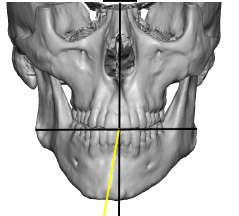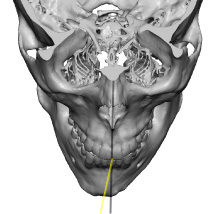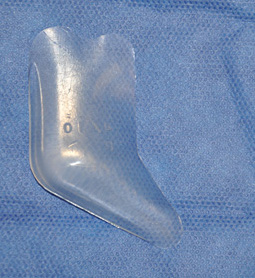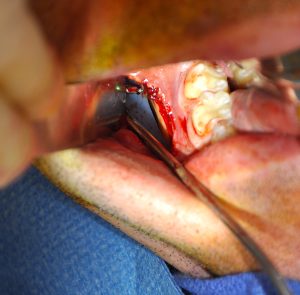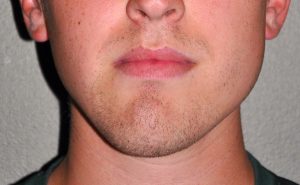Background: One of the most common congenital facial asymmetries affects the lower jaw. Because of its paired brachial arch origin differences in their lengths and how they fuse in the midline affects the shape of the lower jaw. Such jaw asymmetries come in a wide variety of presentations that is almost never as dimensionally simple as one side being merely less long than the other. In most aesthetic jaw asymmetries in my experience there is a shorter side but it is often lower and less wide at the jaw angle area as well.
In many lower jaw asymmetries the definitive treatment is orthognathic surgery as there is a malocclusion associated with it. But in less severe jaw asymmetries their aesthetic appearance is the primary reason to seek treatment. While the asymmetry in the lower facial appearance may seem to dictate what needs to be done, the multidimensional changes may be more complex than it appears. This is why today a 3D CT scan is needed to understand fully how to best camouflage the weaker side of the jaw. Too many times I have seen aesthetic jaw asymmetries treated by ‘eyeballing’ the changes needed which can sometimes actually make it worse.
Treatment options for aesthetic jaw asymmetries can include chin osteotomies for midline positioning, inferior border shaves and various forms of implant augmentations. The 3D CT scan will determine how to apply these treatment options.
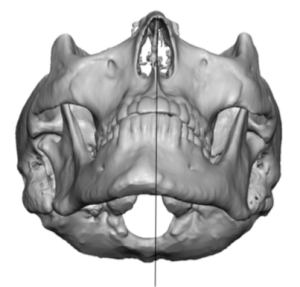

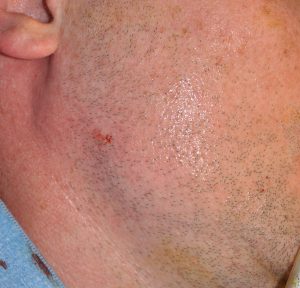
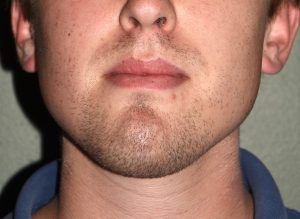
Usually the use of standard jaw implants is not an effective approach to optimal jaw asymmetry correction. In this case a custom jaw implant would have been more ideal because it would have provided additional anterior and inferior augmentation along the jawline. But the 3D CT scan showed that the width was the major issue and the use of a standard implant would provide that needed width.
The approach used in this case of aesthetic jaw asymmetry is an historic one in that sliding the chin over to the left and bringing the right jaw angle width out lengthened the shorter jawline side. But in many other cases of jaw asymmetry the chin is vertically shorter on the affected side in which case a custom jawline implant that lengthens the entire jawline from angle to chin is needed.
Case Highlights:
1) Congenital jaw asymmetry can create a shorter side in which the chin is deviated towards it and the jaw angle is less wide.
2) An historic method of jaw asymmetry correction is a bony chin midline repositioning and right jaw angle implant augmentation.
3) A preoperative 3D CT scan is needed to determine the best method of jaw asymmetry correction.
Dr. Barry Eppley
Indianapolis, Indiana

